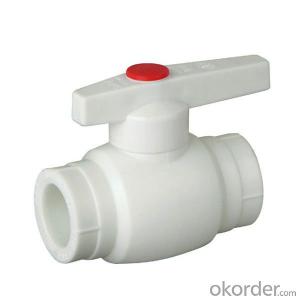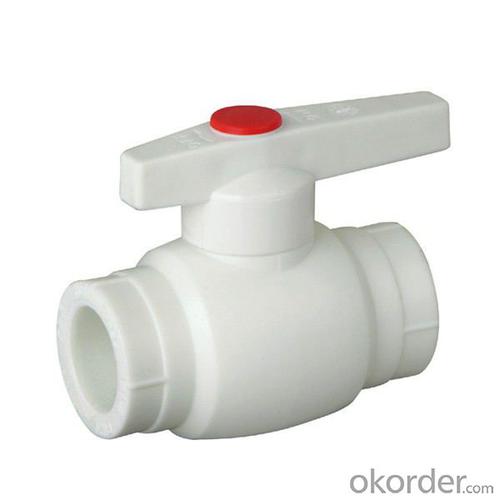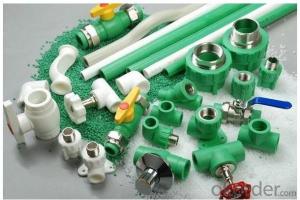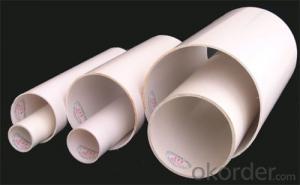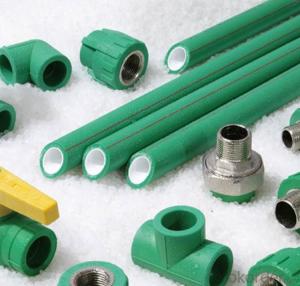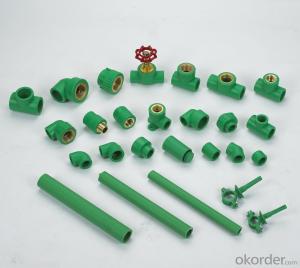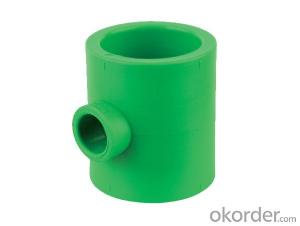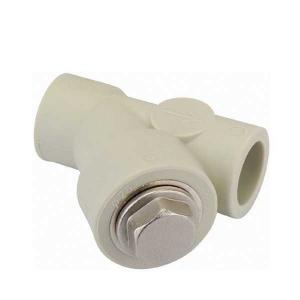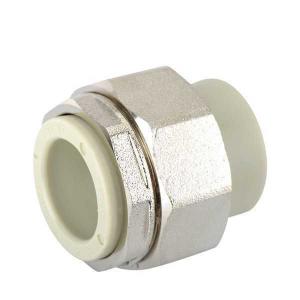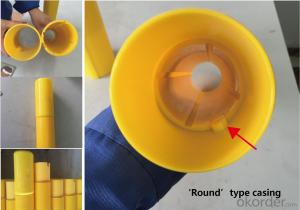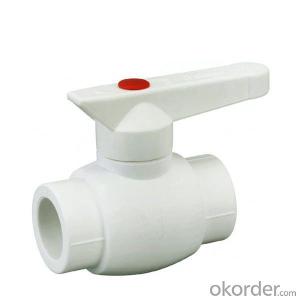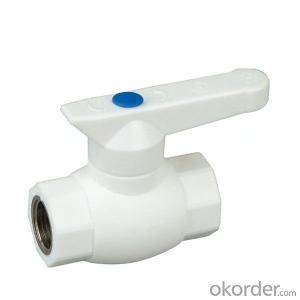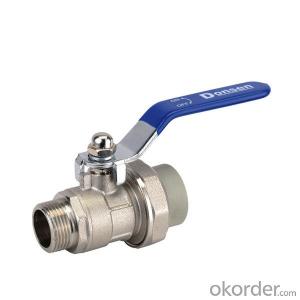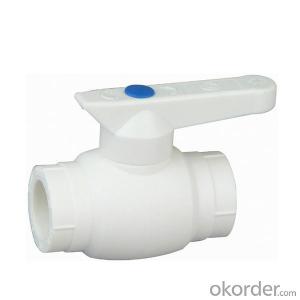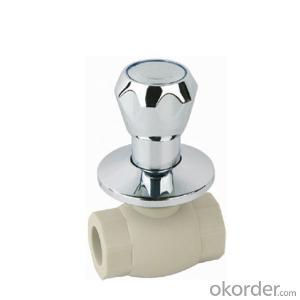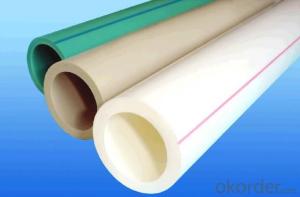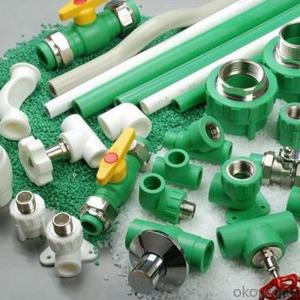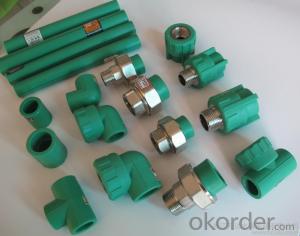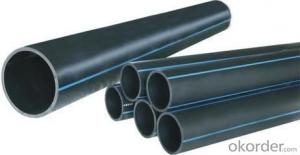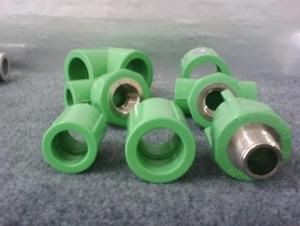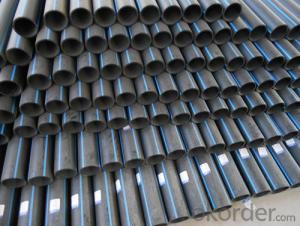Plastic Pipe Flange Fittings for PPR Ball Valves - Industrial Application from China
- Loading Port:
- Tianjin
- Payment Terms:
- TT OR LC
- Min Order Qty:
- 1000 pc
- Supply Capability:
- 100000 pc/month
OKorder Service Pledge
OKorder Financial Service
You Might Also Like
Product Overview
1) Cold / hot water supply facilities for public buildings
2) Food, chemical, electronic industry pipeline networks; Such as Pipeline networks for transporting all kinds of corrosive liquids
3) Drinking water production system pipeline networks; Such as Pure water and mineral water
4) Air conditioning facility pipelines
5) Compressed gas pipeline networks for industry
6) Pipeline networks for swimming pools
7) Pipeline networks for solar energy facilities
8) Agriculture and garden production transporting systems
Application
Distribution for cool and hot water;
Duct for drinkable water system;
Pipes for kinds of high-temperature and low-temperature heating system;
Pipes for heating and cooling settings in solar energy system;
Connecting pipe for air conditioners
Feature
1) The professional factory of fittings.
2) The important manufacture of fittings in china.
3) High quality and better price.
4) Convenient One touch fittings provide instant tubing connections.
5) Elliptical release ring help to connect the tube easily by manual, no special tools required.
Product Description
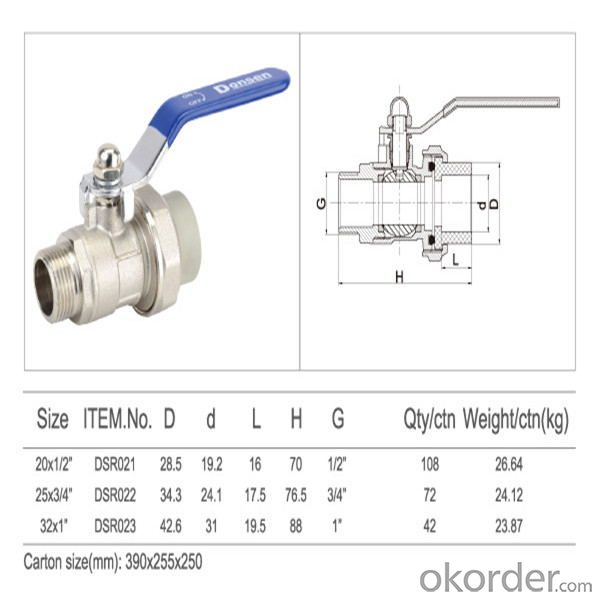
Company Information
CNBM International Corporation (CNBM International) is the most important trading platform of CNBM Group Corporation, a state-owned company under the direct supervision of State-owned Assets Supervision and Administration Commission of the State Council.
CNBM International is highly recognized by its business partners and clients all over the world and has obtained rapid development under the spirit of win-win. We will carry on the mutual beneficial, innovative and revolutionary trading structure as we did before, create value for our employees, share holders and clients and benefit the whole society in our future development.
- Q: Are plastic pipe fittings compatible with compression couplings?
- Yes, plastic pipe fittings are generally compatible with compression couplings.
- Q: Are plastic pipe fittings resistant to scaling and buildup?
- Yes, plastic pipe fittings are generally resistant to scaling and buildup.
- Q: Are plastic pipe fittings resistant to chemical corrosion?
- Yes, plastic pipe fittings are generally resistant to chemical corrosion.
- Q: Can plastic pipe fittings be used for underground cable protection?
- No, plastic pipe fittings are not suitable for underground cable protection. Underground cables require more durable and robust protection to withstand external forces and potential damage. Metal conduit or specialized cable protection systems are typically used for this purpose.
- Q: Natural gas aluminum pipe, what fittings are best used?
- Aluminum plastic pipe in the installation and use, should try to avoid small radius bending, in order to prevent the aluminum tube part of the rupture; at the same time avoid connecting pipe buried in the wall, underground, in order to facilitate inspection and maintenance.
- Q: Can plastic pipe fittings be used for hydroponic systems?
- Yes, plastic pipe fittings can be used for hydroponic systems. They are commonly used due to their durability, affordability, and resistance to corrosion and chemical damage. Plastic fittings can easily connect pipes and components in a hydroponic system, providing a reliable and leak-free solution. Additionally, plastic fittings come in various sizes and shapes, allowing for easy customization and adaptation to different hydroponic setups.
- Q: Can plastic pipe fittings be used in rainwater harvesting systems?
- Yes, plastic pipe fittings can be used in rainwater harvesting systems. Plastic fittings are commonly used in these systems due to their durability, corrosion resistance, and ease of installation. Additionally, plastic fittings are typically more affordable compared to other materials, making them a popular choice for rainwater harvesting systems.
- Q: How do plastic pipe fittings work?
- Plastic pipe fittings work by connecting sections of plastic pipes together in a leak-proof manner. They are designed with various shapes, sizes, and connections to accommodate different pipe systems. These fittings usually have threads, sockets, or grooves that allow them to be securely attached to the pipe ends. The fittings create a tight seal using compression, glue, or heat fusion methods, ensuring that the pipes remain connected and prevent any leakage.
- Q: Are plastic pipe fittings suitable for hydronic heating systems?
- Yes, plastic pipe fittings are suitable for hydronic heating systems. Plastic pipe fittings, such as those made from PEX (cross-linked polyethylene) or CPVC (chlorinated polyvinyl chloride), are commonly used in hydronic heating systems due to their durability, flexibility, and resistance to corrosion. These fittings are also easy to install and can handle the high temperatures and pressures typically found in hydronic heating systems.
- Q: How do you connect plastic pipe fittings together?
- To connect plastic pipe fittings together, you typically use solvent cement or adhesive designed specifically for plastic pipes. First, make sure the pipes and fittings are clean and free from any debris. Then, apply the solvent cement or adhesive to both the pipe and fitting surfaces. Push the pipe into the fitting firmly and hold it in place for a few seconds to allow the cement or adhesive to bond. Finally, wipe off any excess cement or adhesive and let the connection cure according to the manufacturer's instructions.
Send your message to us
Plastic Pipe Flange Fittings for PPR Ball Valves - Industrial Application from China
- Loading Port:
- Tianjin
- Payment Terms:
- TT OR LC
- Min Order Qty:
- 1000 pc
- Supply Capability:
- 100000 pc/month
OKorder Service Pledge
OKorder Financial Service
Similar products
Hot products
Hot Searches
Related keywords
